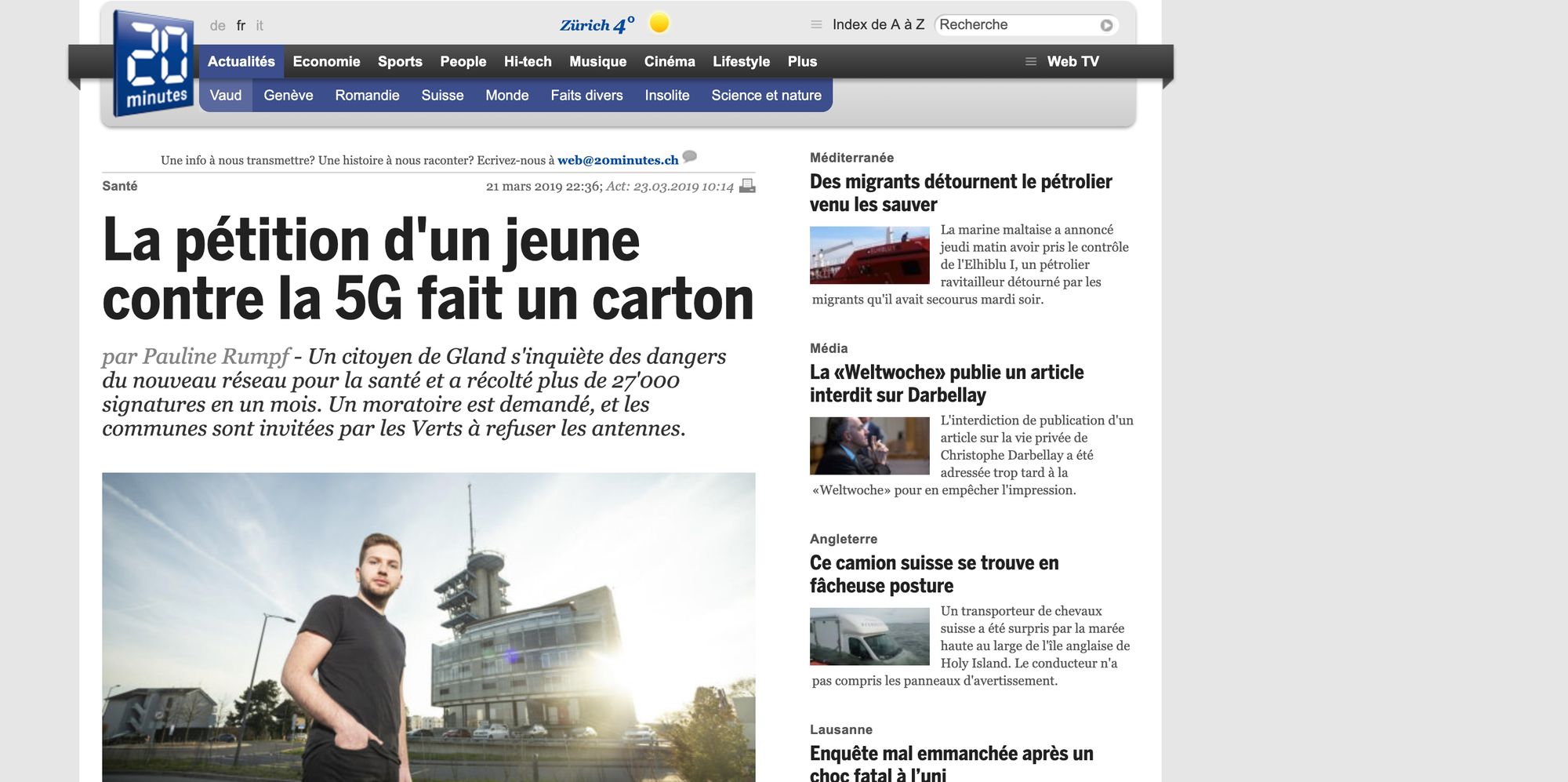Switzerland - Petition Against 5G: An Answer to 20Minutes.ch “Article”
Badly designed articles which lack proper (journalistic) methods favor the spread of fake-news, misinformation, and false beliefs. Media and journalists have huge responsibilities to fact-check and provide equally balanced information between what is said and verifiable facts & scientific knowledge.

Badly designed articles which lack proper (journalistic) methods favor the spread of fake-news, misinformation, and false beliefs. Media and journalists have huge responsibilities to fact-check and provide equally balanced information between what is said and verifiable facts & scientific knowledge.
This is the full message translated in english –as the original one was in french– I sent to 20Minutes newspaper following one of their article, relaying a questionnable opinion as fact and displaying a lack of journalistic rigor.
“Dear 20Minutes,
I am contacting you regarding your article “La pétition d'un jeune contre la 5G fait un carton” (The petition of a young man against the 5G is a hit) published on March 23, 2019, under the “Health” topic.
Context
In recent weeks (months?), many petitions campaigns against the 5G technology abounded on the internet, and especially through social media. It is important to note that this movement does not rely on verifiable facts, scientific studies or research on electromagnetic fields, but mainly on speculations, doubts about the intentions of the [Swiss] telecom groups, and a feeling of fear about a misunderstood technical subject. Misunderstandings and fears largely fuelled by online content designed to cast doubts, suspicions, and emotional reactions in public minds and mainly originating from questionable sources.
The method here is nothing new and mainly relies on raising lots of questions and drawing lines between pseudo “clues”, therefore rerouting people's attention on the “problems” they just made up, hiding or minimizing real existing evidence and understanding of the phenomenon. It becomes even more fallacious when they pick few studies that confirm their pre-existing opinion to justify the righteousness of their whole speeches, ignoring the many more that conclude otherwise and confirming their misconception of how science works.
It is important to note that when an assertion is not supported by any evidence, that it denies or reject the existence of contrary evidence, ignores the scientific consensus as well as the position of international health organizations around the world, and conveys a an alarmist and a pro-conspiracy message (playing on fears and favoring the reactance of the public), it can be categorized as misinformation.
“Extraordinary claims require extraordinary evidence” – Carl Sagan
The issue
It is disturbing, however, to find that a popular media with a large audience –like yours– and which employs journalists, can relay such false information without a careful balance in arguments, fact-check, and by showing the state-of-the-art in the field and presenting reliable & diversified sources.
Don't get me wrong: my criticism is not that there is an article on the subject, but that it shows only one single point of view without development of the aforementioned criticisms. Indeed, this article presenting only Marvin Grimm's opinion –a nurse assistant– and only citing associations obviously “anti-5G”, this can give to readers a false perception of a “single-source of truth”. This contributes to misinformation, false beliefs, and conspiracy theories.
Questions
1) Wouldn't it be desirable for this article's author to update it by presenting facts, evidence, scientific point of view, and perhaps a somewhat less subjective argumentation?
A testimony and opinions don't make reliable proof and even less when the skills of the person (here nurse assistant) in the field of electromagnetic fields are far from being proven.
2) What is your position or that of the author regarding this movement?
You may be biased, but you should clearly state it.
3) Does this type of article have an acceptable journalistic level to you?
Hope that you will take this criticism for what I intended it to be: constructive, concerned for intellectual respect of the readers.
Best regards,
Kevin Richard”
Sources
- WHO – Electromagnetic fields and public health: mobile phones
- Reactance (psychology)
- Extraordinary claims require extraordinary evidence
References
- The World Health Organization (WHO) – Electromagnetic fields (EMF)
- WHO – Electromagnetic fields and public health: mobile phones
- WHO – Electromagnetic fields and public health: Electromagnetic hypersensitivity
- WHO - The Interphone study (2010)
- The Danish cohort study (2011)
- University of Oxford - The Million Women study (2013)

Discussion